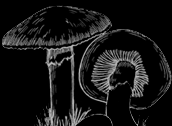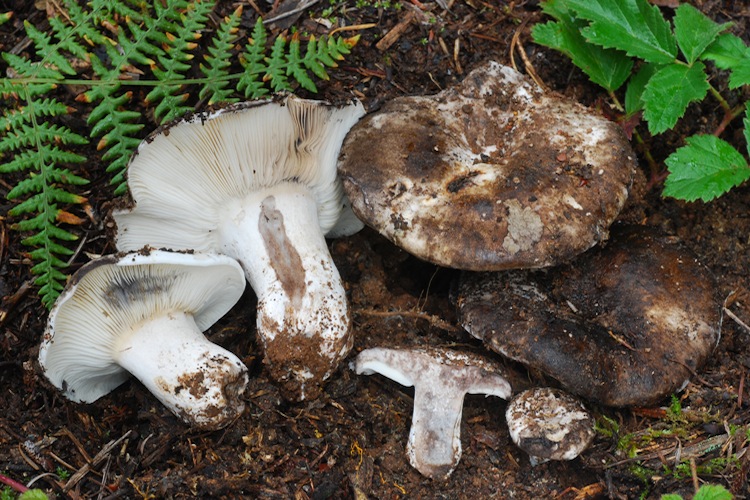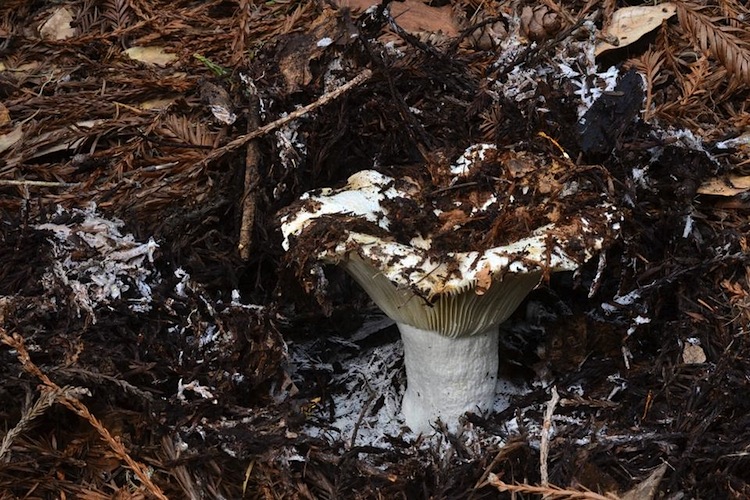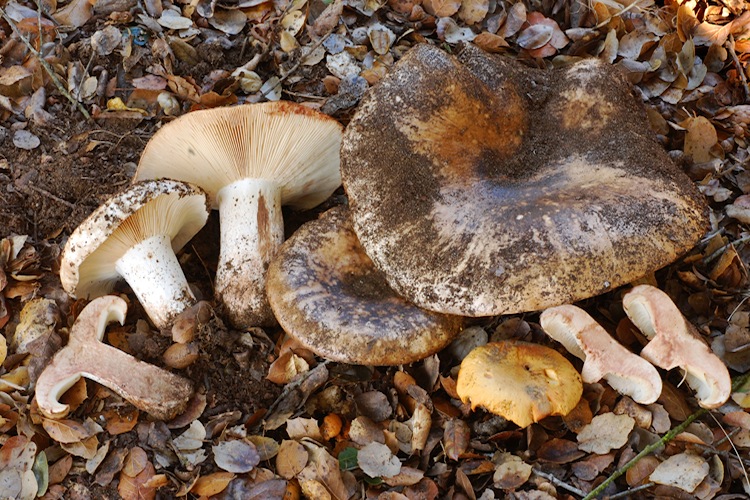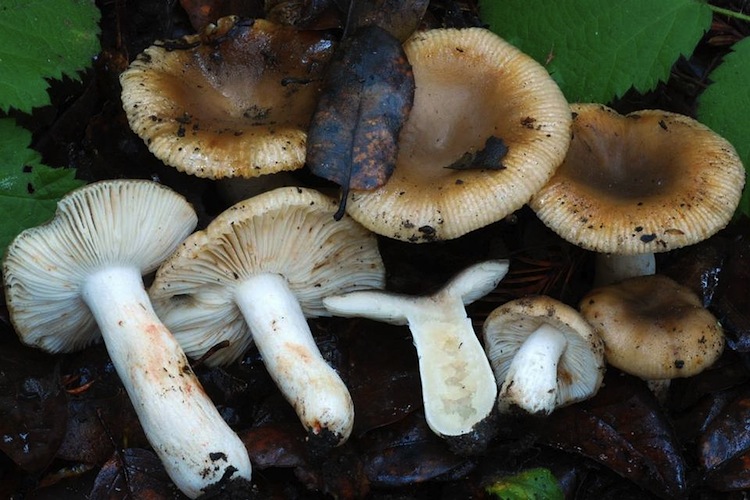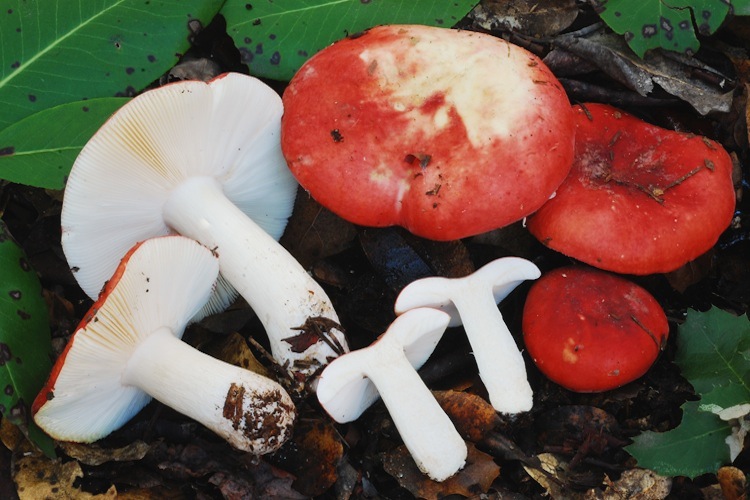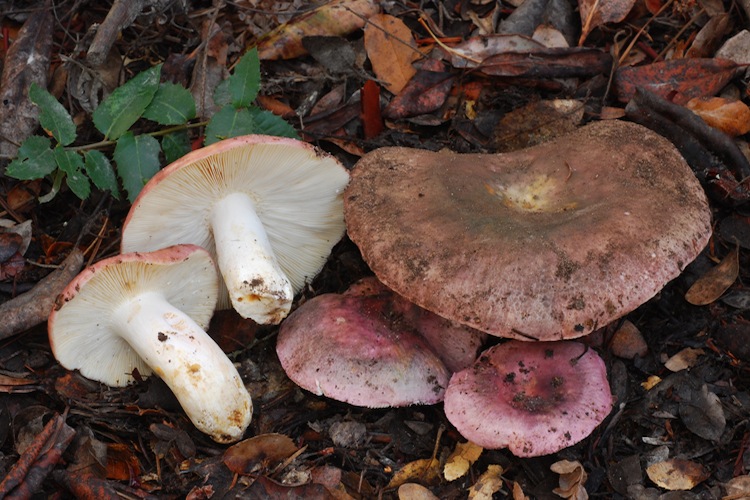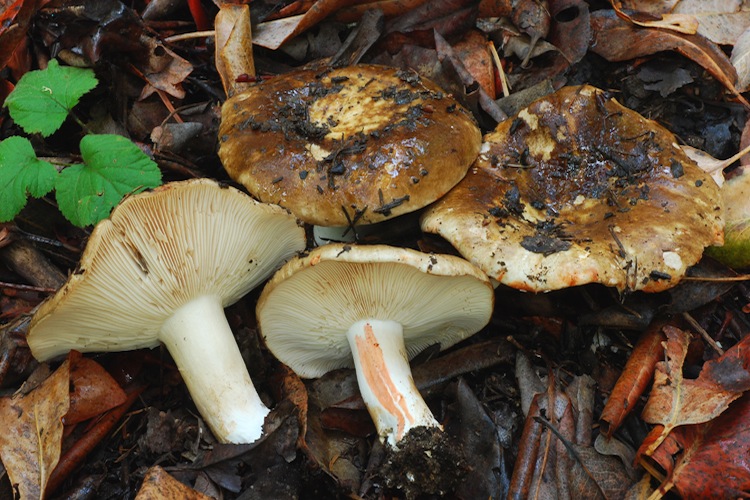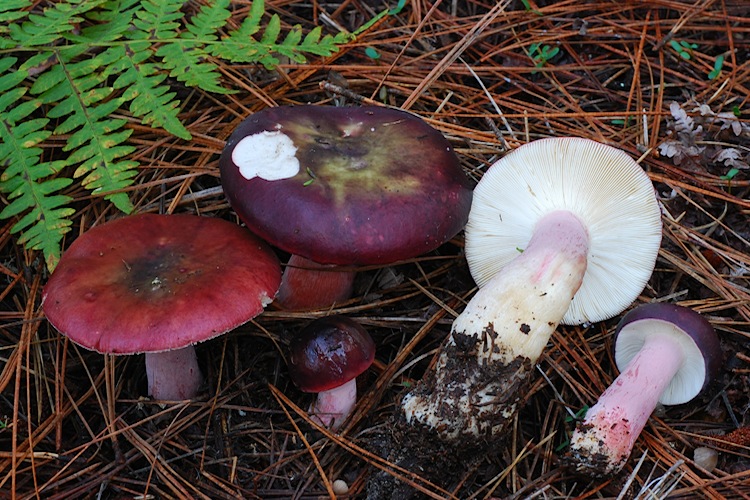Genus: Russula
Known Species in the County
- Russula 'Green Madrone'
- Russula 'Ocher Oaks'
- Russula aeruginea – Green Russula
- Russula albonigra – White and Black Russula
- Russula brevipes – Short-Stalked Russula
- Russula californiensis – Californian Red Russula
- Russula cantharellicola – Chanterelle Eater
- Russula cerolens – Pocket-stalked Russula
- Russula chamaeleontina
- Russula cremoricolor – Winter Russula
- Russula cyanoxantha – Mauve Russula
- Russula densifolia – Reddening Russula
- Russula farinipes
- Russula fragilis – Fragile Russula
- Russula fragrantissima – Almond-scented Russula
- Russula graveolens
- Russula integra
- Russula murrillii
- Russula nigricans – Bloody Blackening Russula
- Russula olivacea – Purple-olive Russula
- Russula queletii
- Russula sanguinea – Rosy Russula
- Russula versicolor – Variable Birch Russula
- Russula xerampelina – Shrimp Mushroom
Approximately 24 species in Santa Cruz County.
Russula Records from Santa Cruz County:
Russula is an iconic genus of fungi, encompassing some of the most familiar and abundant of our woodland mushrooms. Interestingly, although they are easily recognizable and very familiar as a group, they are often very difficult to identify (partially because many are quite variable, partially due to a lack of critical study). Although the genus is extremely diverse in form, texture, and color, the stature, chalky-granular or hard-brittle texture, and lack of milk or latex when broken sets them distinctly apart from most other mushrooms. The gestalt is easy to master with a little experience. All are mycorrhizal, and the genus is extremely important in temperate forests throughout the world (much less diverse in tropical forests).
There are many species in California (hundreds?), many of which remain poorly characterized, undescribed, or both.
Identification of species within the genus is complex, subtle, and often fruitless (due to lack of primary literature to compare to). Overall coloration, size and texture of the fruitbody, presence or absence of a sulcate cap margin, taste (peppery or mild?), presence or absence of short gills, bruising reactions, macrochemical reactions, and details of spore ornamentation (as well as many other microscopic features) are important things to take note of.
